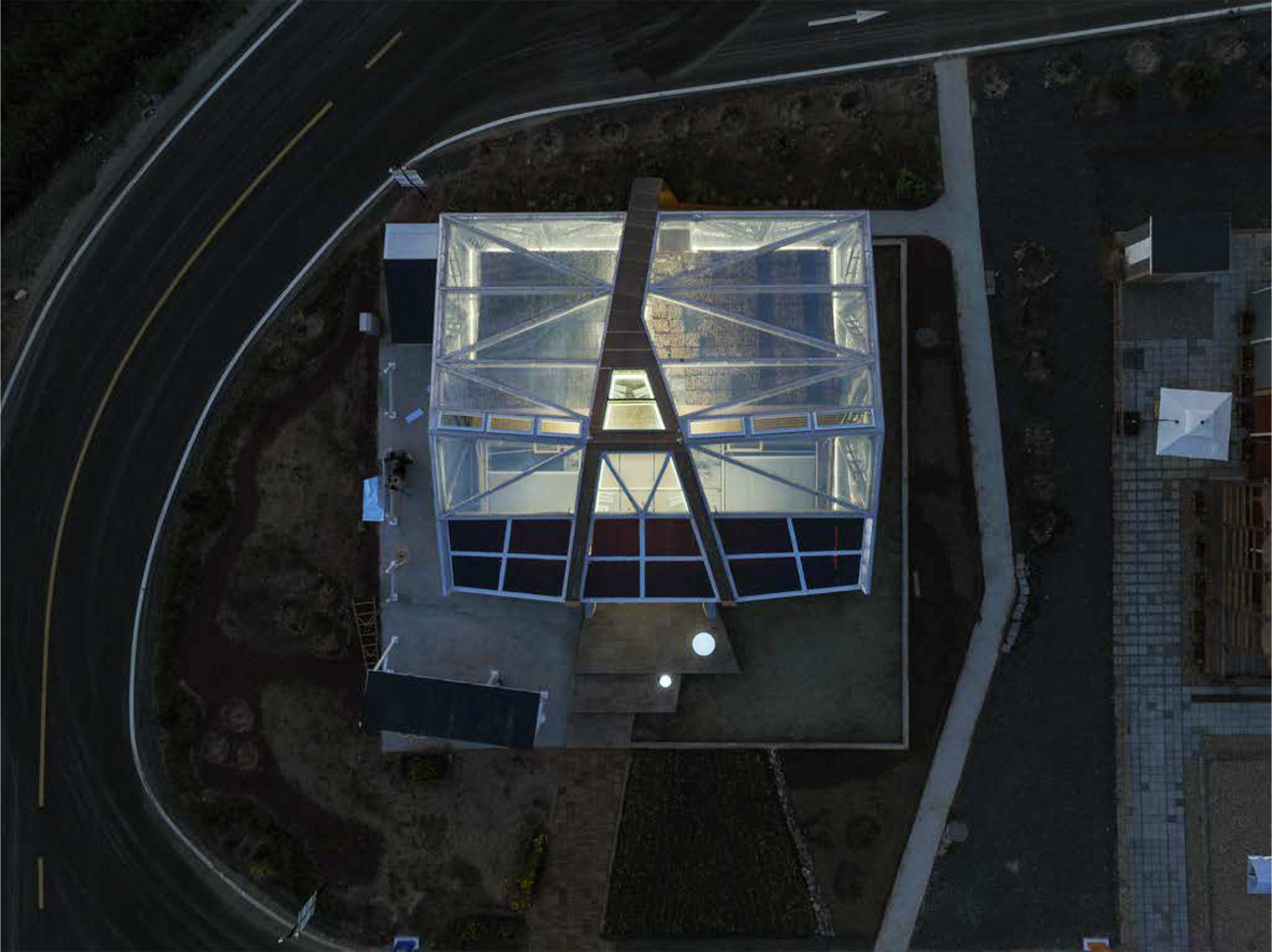As part of an international collaboration project, a team of students from Thomas Jefferson University designed the adaptable double-skin façade of ETFE and Perovskite photovoltaics for this experimental sustainable housing prototype in Zhangjiakou, China. On four faces of the building facade's inner layer are green walls of native plant species. An ETFE exterior layer serves as a protective barrier to the pre-vegetated planters, creating a vertical greenhouse that promotes plant growth and passive air pollution filtration. Air between the vegetated and ETFE façade layers is passively heated and distributed throughout the building during winter months. On the southern façade, Perovskite PV film applied to insulated glazing is optimally located to harvest solar energy and shade south facing windows while maintaining exterior views.
The project, with a duration of only two semesters and requiring an accelerated design and documentation timeline and relied on industry professionals, named in the booklet below, who advised the students throughout the design process. Physical prototyping, digital modeling and energy analysis were integral to the research and development of the façade along with the collaboration with students and professors at the partner schools in China.
The Solar Decathlon China Y-Project is constructed and displayed in Zhangjiakou, China. Built in October 2021, the project was exhibited through the 2022 Winter Olympics. The project is a collaboration between Xi'an Jiaotong - Liverpool University, Zhejiang University and Thomas Jefferson University. The process booklet below documents the project's development through the end of the spring semester before the start of construction.

EXPLODED ROOF AXONOMETRIC

EXPLODED WALL AXONOMETRIC






